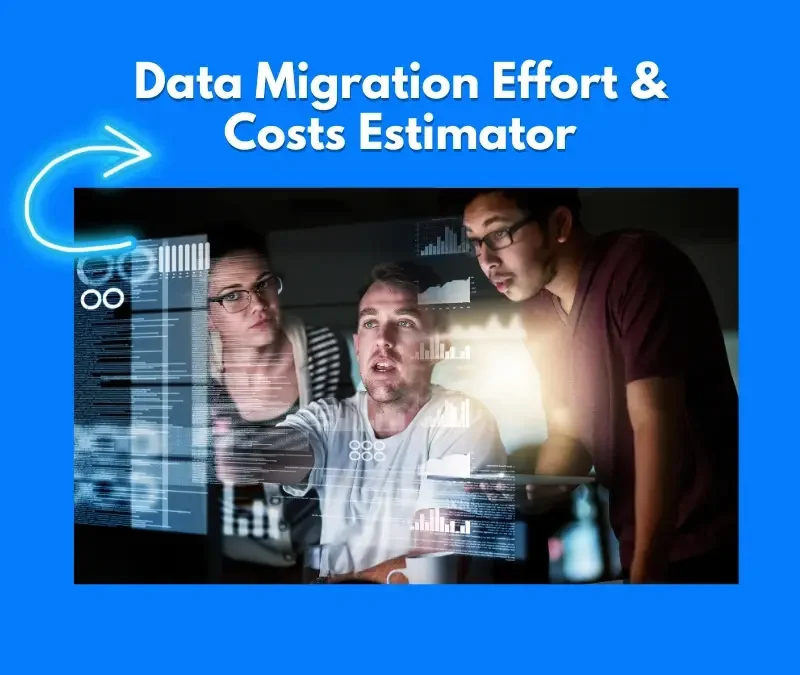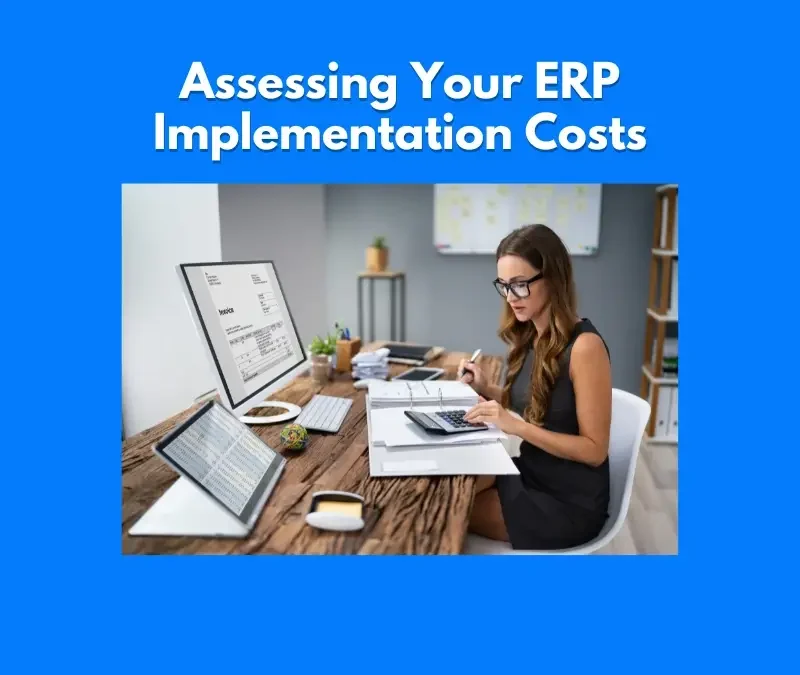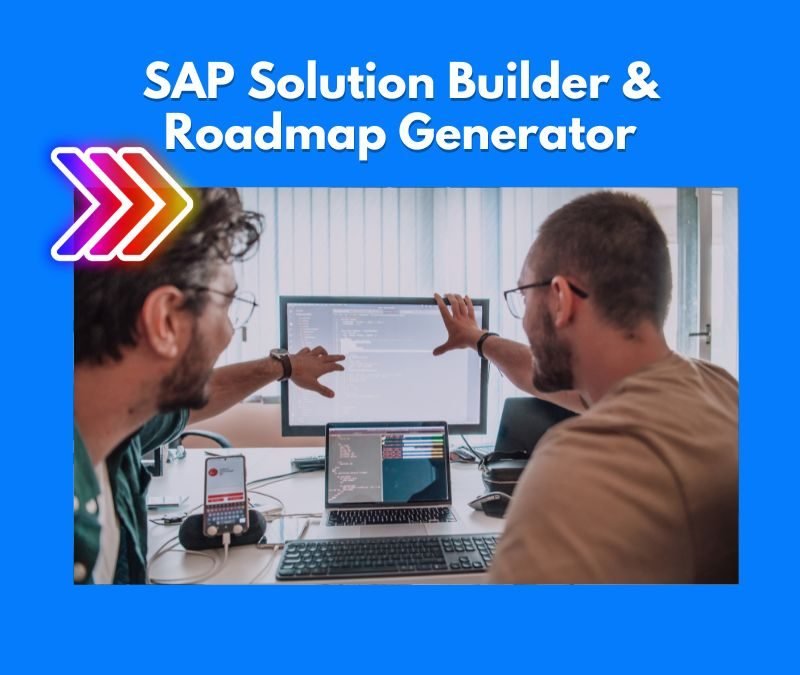SAP Articles
SAP Clean Core Strategy Guide: My Practical Steps for 2025
Noel DCosta
- Last Update :
The SAP Clean Core Strategy is more than a technical best practice, and this is important to know. It is critical for long-term success on SAP S/4HANA. If you’re an SAP architect, project lead, or part of a modernization team managing ECC to S/4HANA transitions, this applies directly to your work.
With ECC support ending in 2033, many organizations are fast-tracking S/4HANA programs. But without the SAP clean core strategy, every upgrade becomes a major risk. Customizations buried deep in the core, create blockers.
SAP Clean core thinking changes that. It focuses on minimizing invasive code changes and extending business logic through scalable, side-by-side tools like SAP BTP.
Who benefits from this approach?
SAP specialists dealing with heavy custom code backlogs
Enterprises planning Greenfield or Brownfield S/4HANA projects
CIOs aiming for agile, upgrade-friendly ERP systems
Teams adopting SAP RISE or BTP-driven extensibility
In real implementations, I’ve seen firms cut upgrade timelines by 40% just by adopting SAP clean core principles. One consumer goods company, for example, replaced legacy pricing logic with a modular Fiori app, outside the core, and avoided regressions during upgrades.
If you’re charting your 2025 roadmap, clean core is where to begin. Everything downstream depends on it.
SAP Clean Core strategy focuses on minimizing custom code in the core ERP system by leveraging side-by-side extensions via SAP BTP. It enables smoother upgrades, better system stability, and future-ready cloud transformation.
What Is the SAP Clean Core Strategy?

If you work with SAP S/4HANA, you’ve probably heard the phrase “SAP clean core” more than once in the past year. But what does it actually mean in practice?
An SAP Clean Core Strategy is all about keeping the digital core of your ERP lean, no buried custom code, no hardwired integrations that break every time something changes. Why you may ask? Because SAP’s roadmap is moving fast. Especially with RISE with SAP, upgrades and new features are becoming more frequent. The more you customize the core, the harder it becomes to keep up.
That’s why SAP clean core strategy is important.
Instead of modifying the system from within, you push customizations and extensions out to SAP BTP. Think of it as working alongside the core, rather than inside it. This gives your teams more room to build, test, and iterate, without risking stability.
It’s not always easy, especially for teams used to tailoring everything. But it sets you up for smoother upgrades and better lifecycle management.
Key SAP Clean Core Concepts
Avoid embedding custom code or tight integrations inside S/4HANA
Use SAP BTP for extensions and custom logic
Stay aligned with SAP’s future-ready architecture, especially under RISE
Design with upgrades in mind, fewer surprises, fewer reworks
You do not need to go all in on day one. But starting with an SAP clean core mindset early helps avoid costly rework later. Many teams we’ve worked with find that even small changes, like refactoring one integration, can make a noticeable impact.
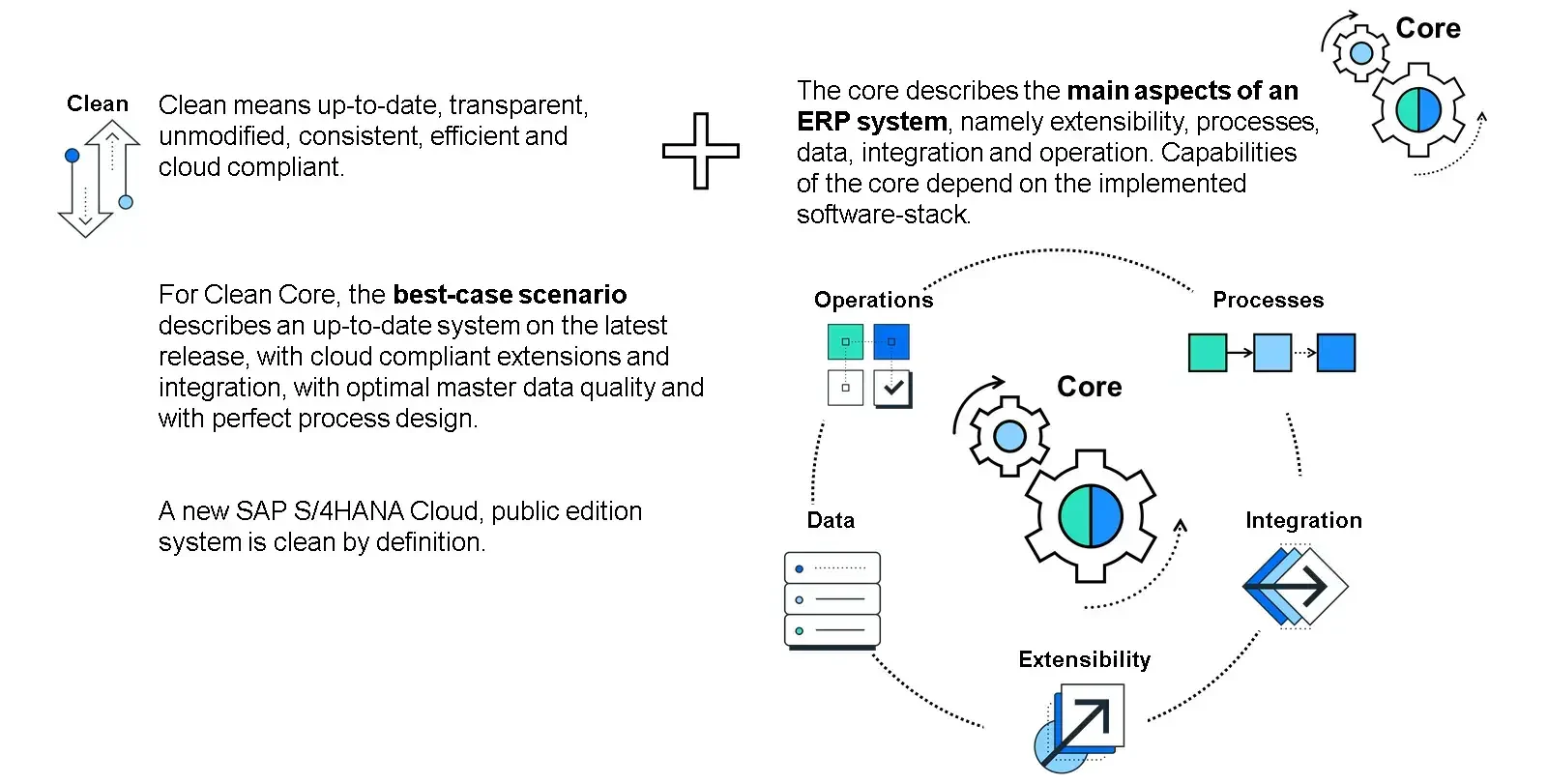
1. Is SAP Clean Core Strategy Right For Your Business?
| Evaluation Area | Consideration | What to Assess |
|---|---|---|
| IT Landscape | Multiple legacy customizations exist in key SAP modules | Consider reducing technical debt to ease future upgrades |
| Business Agility Needs | Your teams often require changes or new rollouts | Clean core makes it easier to respond to change quickly |
| Upgrade Frequency | You plan to adopt SAP’s regular release cycle | A clean core approach simplifies keeping up with versions |
| Integration Complexity | You rely heavily on cloud or external systems | A modular, API-based approach supports flexible connections |
| Customization Depth | Many Z programs and enhancements are deeply embedded | Review and refactor or externalize custom logic |
| Cloud Transformation Plan | You are preparing for RISE or S/4HANA Cloud adoption | Clean core helps align with cloud-readiness goals |
| Development Model | Your goal is agile, modular development at scale | A clean core setup encourages well-structured practices |
| Compliance Requirements | You need strong traceability and control in place | Clean design helps maintain clear compliance boundaries |
2. Difference Between SAP Clean Core and Non-Clean Core Implementation
| Aspect | SAP Clean Core | Non-Clean Core |
|---|---|---|
| Upgrade Readiness | Updates are easier due to external extensions | Core changes require extensive retesting and fixes |
| Customization Method | Built using side-by-side tools like SAP BTP | Custom code written directly into core system |
| Extensibility Approach | Decoupled, making changes easier | Changes are tightly linked to the core and harder to manage |
| Technical Debt | More controlled with fewer long-term issues | High due to unmanaged and scattered changes |
| Compliance and Audit | Stronger due to cleaner separation of logic | Challenging due to core-level custom logic |
| Performance | Stable because logic is optimized and isolated | Slower response from overloaded core processes |
| Development Speed | Faster using visual tools and external platforms | Slower due to complex ABAP changes |
| Vendor Support | Aligned with SAP’s standard support guidelines | Delayed support when core is modified |
| Upgrade Frequency | Enables regular upgrades with minimal effort | Projects are often delayed to avoid rework |
| Cloud Migration | Smoother transition to cloud models | Needs significant cleanup before migration |
| Total Cost of Ownership | Lower in the long run due to fewer disruptions | Higher due to patching and maintenance of core changes |
3. SAP Clean Core Implementation Readiness Assessment
SAP Clean Core Implementation Readiness Assessment
Use this self-check to evaluate how prepared your organization is for a Clean Core SAP S/4HANA approach. It covers technical, process, delivery, and organizational areas that directly impact readiness.
Why SAP Clean Core Strategy is Important in SAP S/4HANA Programs

There is a growing shift in how organizations approach SAP S/4HANA. And if you’ve been around a few modernization cycles, you already know the pain of navigating overly customized legacy ERP systems. That’s where an SAP Clean Core Strategy starts to make real business sense.
The SAP clean core strategy approach is not about doing less. It is about doing just enough, without overengineering your ERP environment. With SAP pushing rapid innovation through updates and automation, holding on to complex custom code eventually becomes a blocker.
1. Strategic Drivers
One client told me they had to delay a feature rollout by four months because of dependencies tied to their old Z-code. That delay cost them both time and momentum.
Here is why clean core thinking helps:
-
Avoid lock-in from legacy customizations
Custom code might feel necessary at the time, but it quickly becomes baggage. A clean core avoids creating long-term technical debt that locks you into rigid workflows, making future upgrades harder and slower. -
Reduce long-term TCO by cutting complexity
The more complex your system is, the more expensive it becomes to maintain. SAP Clean core practices cut unnecessary development and integration effort, which translates directly into lower support and maintenance costs. -
Enable real-time innovation (AI, ML, automation)
SAP’s roadmap is heavily focused on intelligent automation and analytics. But many of these tools depend on a simplified, standardized core to function properly. Keeping your core clean helps you adopt these innovations faster and with less disruption.
2. Operational Benefits
There is also the day-to-day impact. SAP Clean core setups typically allow:
-
Higher agility in rolling out new features
You can respond to business needs faster. When the core is free from tightly coupled dependencies, delivering new features becomes less about rework and more about value delivery. -
Faster regression testing
Simplified architecture leads to smaller test cycles. QA teams spend less time dealing with edge cases caused by outdated customizations and more time validating core processes. -
Leaner deployment schedules
Shorter deployments mean less downtime, fewer late nights, and a smoother handover to operations. You are no longer stuck coordinating across dozens of custom objects just to move one change forward.
With an SAP Clean Core Strategy, your team is not constantly patching old workarounds. Instead, they are focusing on enabling real progress, something many programs could use more of right now.
Financial and Operational benefits of SAP Clean Core Strategy
| Benefit Category | Description | Business Impact (Quantified) |
|---|---|---|
| Lower Upgrade Costs | Custom logic stays outside the core, reducing effort during SAP version upgrades. | Up to 40% reduction in upgrade costs and 30%–50% faster release cycles. |
| Reduced Technical Debt | Legacy code is isolated or retired, minimizing future breakage and overhead. | Long-term rework and regression issues drop by 60%–70%. |
| Improved Total Cost of Ownership | System stability improves with fewer in-core modifications, lowering long-term support needs. | Expected 20%–35% savings in annual support, patching, and maintenance. |
| Faster Time to Value | Teams can deploy features independently without waiting on core release schedules. | New business functionality can go live 40%–60% quicker. |
| Easier Compliance | Audit boundaries are clearer when custom processes live outside the ERP core. | Audit prep time drops by ~30% with lower risk of compliance delays. |
| Improved Agility | Changes can be implemented with lighter regression checks. | Response time to business needs improves by 50%–70%. |
| Better Collaboration | Developers and analysts work in parallel with fewer conflicts. | Delivery cycles are ~25% faster across distributed teams. |
| Cloud-Readiness | Architecture aligns with cloud-first platforms and SAP-managed environments. | Cloud transitions speed up 30%–50% with ~40% less remediation. |
For context on how the approach works, review what a Clean Core means for your business. To justify investment, build out the SAP business case and estimate spend with the cost and budget breakdown. As you execute, track outcomes using ERP implementation KPIs and avoid rework by skimming common modernization mistakes.
Business Value of a Clean Core SAP Environment
Think about global rollouts. Or post-merger harmonization. In most of those cases, custom code and inconsistent processes quickly slow things down. With SAP clean core strategy, the foundation stays lean, allowing you to move faster without giving up control.
1. SAP Clean Core Strategy ROI
The return is not always immediate, but it compounds over time. In recent projects, I’ve seen:
Up to 70% automation across global processes
By simplifying the core and aligning with standard SAP processes, teams could automate without building new logic each time.Roughly 50% reduction in database bloat
Eliminating unused tables, legacy Z-objects, and tight custom dependencies allowed one client to shrink their productive DB footprint significantly.Simplified system monitoring and scaling
With fewer technical interlocks, infrastructure teams now spend more time on performance tuning and less on managing patchy integrations.
2. Business Outcomes
Then there is the business-facing side, which often carries more weight:
Unified reporting and real-time visibility
With standard data models and harmonized processes, analytics stopped being a reconciliation task and started supporting real decisions.Consistent global templates
One company with operations in 14 countries managed to cut their rollout time in half simply because the baseline design did not require major localization.Modular extensions through SAP BTP
Where specific requirements existed, they were addressed with side-by-side apps using SAP Business Technology Platform, leaving the core untouched.
The SAP Clean Core Strategy is not about stripping away capability. It is about creating a base that supports long-term transformation. And for most mature SAP landscapes, that shift is no longer optional. It is strategic.
Why Businesses Are Adopting SAP Clean Core Strategies
| Reason | Details | Business Benefit |
|---|---|---|
| Upgrade Readiness | Custom logic is kept outside the core to avoid disruption during upgrades. | Speeds up upgrade cycles and cuts rework costs. |
| Extensibility Using BTP | Extensions are built separately using SAP BTP. | Enables change without touching core processes. |
| Cloud Transition | Clean core simplifies migration to S/4HANA Cloud and RISE with SAP. | Reduces effort and downtime during cloud moves. |
| Reduced Maintenance | Limits direct modifications in SAP core systems. | Cuts ongoing support cost and simplifies upgrades. |
| Future Alignment | Matches SAP’s direction for clean upgrades and a stable core. | Avoids rebuilds or unsupported custom work later. |
| Compliance and Governance | Core and extensions are separated for easier tracking. | Improves audit traceability and internal controls. |
| Developer Productivity | Isolated extensions reduce complexity and testing scope. | Faster delivery without breaking standard logic. |
For a full walkthrough of the approach, see what a Clean Core means for your business.
ECC to S/4HANA Migration Strategy
ECC to S/4HANA Migration
Move from ECC to S/4HANA with technical and organizational readiness guidance.
SAP Clean Core Strategy
Standardize and de-customize to align with S/4HANA architecture requirements.
Greenfield vs Brownfield
Evaluate which migration approach is right for your business.
SAP Business Case Guide
Build stakeholder alignment and ROI visibility before your S/4HANA move.
smartShift in Clean Core Strategy Execution

In most S/4HANA projects I’ve handled, custom code becomes a problem sooner than expected. Clients often don’t realize how much Z-code they’ve accumulated until we run the first analysis. And honestly, sorting through it manually used to be a painful, weeks-long task.
That’s where smartShift changed the game for me. I use it as part of my SAP Clean Core Strategy work, not just for speed, but for decision clarity.
What I Use smartShift For
Handling custom code at scale
I’ve seen systems with over 40,000 custom objects. With smartShift, I could filter out 70% of what wasn’t needed. Not all tools can do that without heavy effort.Enforcing clean core principles
Most clients talk about keeping their core clean. Few manage it well. smartShift helps me push for code that lives outside the core, aligned with BTP and extensibility standards.Getting technical debt under control
It flags problem code, suggests remediations, and lets me make a real business case to remove or refactor Z-code. That makes client approvals easier too.
Where It Fits in My Projects
Pre-migration cleanup
I usually run smartShift early, during the assessment. It saves time downstream and surfaces risk before conversion.After the go-live
I don’t just shut the tool off. Post-upgrade, it helps me validate that what was fixed still works, and what’s newly added stays compliant.Ongoing support
For clients with large internal dev teams, I’ve recommended they keep smartShift running in the background. It helps them stay within clean core boundaries over time.
One example that stands out, during a consumer goods migration, we dropped from 35,000 custom objects to 6,000 in about three weeks. That wasn’t just automation, it was practical decision-making, faster.
If your SAP Clean Core Strategy includes serious custom code cleanup, this is one of the few tools I’d vouch for. Because I’ve used it, and it helped me move faster, with fewer surprises.
SAP Clean Core Strategy Implementation Framework
Moving to a clean core in SAP S/4HANA is not about zero custom code. It is about clarity…about control. And creating a foundation that enables change without breaking what already works. A good SAP Clean Core Strategy gives you structure, but not rigidity.
I have helped teams take monolithic ERP systems and break them into modular, manageable parts. This framework outlines the phases we usually follow. It’s not theory. It is what we use in real programs.
Phase 1 – Audit and Baseline
Before you can clean anything, you need to know what’s there.
We start with a code and process audit. Using tools like SAP ATC and smartShift’s analysis engine, we scan the entire custom footprint. It’s not just about volume, it’s about identifying which custom objects are still used, which are outdated, and which carry risk.
Inventory everything: Reports, user exits, Z-tables, BAdIs. The whole landscape.
Classify: Custom objects are tagged for deletion, rewrite, or retention.
Map dependencies: Know what integrations and data flows depend on custom elements.
Often, clients are shocked to discover that 40–60% of custom code is no longer in use. Removing this upfront reduces migration friction.
You also need to baseline key metrics:
Transport volume per year
Release frequency
Code review coverage
Test automation rate
These give you a benchmark for post-migration performance improvements.
Phase 2 – Refactor and Decouple
This is where the real work starts. And it’s where many projects stall, because clean core means letting go of deeply embedded habits.
Where possible, we shift custom business logic out of the SAP S/4HANA core and into side-by-side apps or services. SAP BTP, particularly with SAP Build and CAP (Cloud Application Programming model), plays a central role here.
Key activities:
Externalize logic: Use APIs and event-driven architecture to offload custom processes to BTP.
Rewrite with clean principles: Avoid hard-coded dependencies. Stick to SAP’s extensibility model.
Design with upgrades in mind: Assume SAP will push quarterly updates. Your code should survive them.
A few examples:
Custom price calculations become reusable BTP services.
Z-reports that pull from tables directly are rebuilt using CDS views with proper authorizations.
Front-end adjustments move to SAP Fiori custom apps with adaptive UI layers.
Yes, it takes time. But once you decouple, you stop breaking the system every time something changes.
Phase 3 – Governance
Even with the right architecture, your SAP Clean Core Strategy will fail without discipline. Governance is what keeps things from drifting.
You need to define clear guardrails, what is allowed in the core, what must be external, and how changes are deployed.
We help clients set up CI/CD pipelines using tools like:
SAP Cloud ALM: For change impact monitoring
Jenkins or GitHub Actions: For automated code testing
Transport Management tools: To enforce stage-gated deployments
Key governance elements:
Coding guidelines aligned to S/4HANA clean core principles
Automated code checks for every transport
Change request boards that review extensibility approach, not just functionality
It’s also important to set up a clean core review during every quarterly SAP release. Just because the system runs doesn’t mean it’s clean.
Why is this Important for You?
We once worked with a client in the energy sector who had over 28,000 custom objects. They needed to move to S/4HANA within 18 months. With smartShift, we reduced that to under 7,000, with 85% automation. But more importantly, we gave them a framework they could maintain after go-live.
SAP clean core is not a one-time project. It’s a practice. It protects your ERP investment and allows your teams to innovate without risk.
And when done right, it saves serious cost over time, in regression testing, in downtime, and in lost agility.
If you’re serious about SAP modernization, a clean core framework gives you the edge. It’s technical, yes, but the value shows up in every business rollout that doesn’t go over budget or miss a timeline.
Let me know if you want help getting started.
Transitioning to S/4HANA with SAP Clean Core
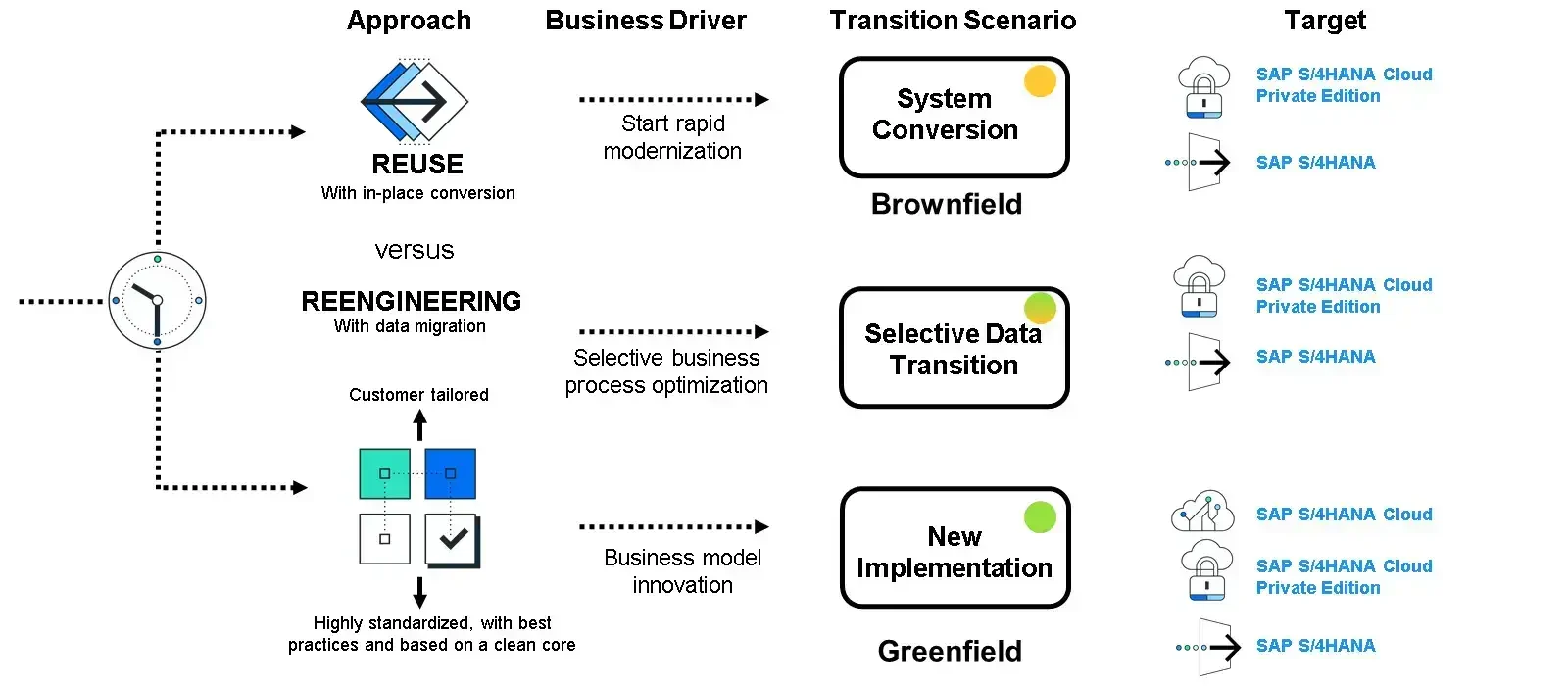
Moving to S/4HANA with the SAP clean core strategy is more than just a system upgrade, it’s a chance to rethink how your ERP supports the business. But it also forces tough decisions. What do you keep? What do you let go? And how much complexity is worth rebuilding?
The path you take shapes how these decisions play out. There’s no universal answer, but three common approaches show up in most real-world projects.
1. System Conversion (Brownfield)
This is the direct route: migrate your existing ECC system into S/4HANA. All your configurations, master data, and (unfortunately) most custom code come along for the ride.
It works well for companies with stable processes and deep investments in their current system. But it requires discipline to avoid just dragging technical debt into a newer box.
What makes this approach work:
A custom code analysis early on to flag what’s obsolete
A technical debt cleanup plan with clear priorities
Strong governance to prevent further customization post-migration
It’s faster to implement than starting from scratch, but you’ll need post-go-live cleanup phases to align with clean core principles.
2. Greenfield Implementation
This is the cleanest approach, but also the hardest. You build a new S/4HANA system from the ground up, without carrying over old processes or customizations. That means you can stick closely to SAP standards and only extend where it’s truly needed.
Greenfield works best when:
Your current system is too outdated or heavily customized to salvage
You want to simplify operations or standardize globally
You’re willing to revisit business processes, not just replicate them
It requires more involvement from business teams, more decisions upfront, and strong alignment between IT and operations. But the long-term payoff, fewer upgrades headaches, lower maintenance costs, cleaner architecture, is significant.
3. Selective Transformation
This hybrid approach gives you more flexibility. You selectively migrate parts of your system, like master data and core configurations, while redesigning or rebuilding areas that no longer serve the business.
It’s often used by companies that:
Have multiple ECC systems to consolidate
Want to modernize selectively without losing everything familiar
Need to keep historical data but clean up business logic
The key here is planning. If you don’t clearly define what’s being kept and why, the project can drift into either full conversion or an over-engineered greenfield without the benefits of either.
What Helps, Regardless of Path
No matter how you move to S/4HANA, a few things make a real difference:
Run detailed process assessments. What’s essential? What’s just habit?
Document every extension decision. It saves time later and prevents reinvention.
Invest early in skills. Your team needs BTP, API integration, and extension framework knowledge.
Plan for resistance. Change is hard. Don’t underestimate the cultural side of this work.
There’s no “best” method, just the one that fits your business goals, your current system, and your appetite for change. What matters is staying focused on long-term simplicity, not short-term comfort. Clean core isn’t just a destination. It’s a discipline.
1. Transitioning to S/4HANA with SAP Clean Core Strategy
| Transition Phase | Focus Area | Clean Core Guidance |
|---|---|---|
| 1. System Assessment | Review legacy ECC system, custom objects, and enhancements | Run ATC and usage reports to identify what can move to side-by-side extensions |
| 2. Scope Definition | Decide what stays in the core and what moves outside | Shift custom reports, workflows, and UIs to an external layer like SAP BTP |
| 3. Governance Setup | Define rules for managing custom code going forward | Establish a review board and enforce a clean core policy |
| 4. Custom Code Strategy | Rebuild or eliminate tightly coupled ABAP logic | Use modern tools like CAP or RAP to develop extensions |
| 5. Integration Architecture | Design efficient and loosely coupled connections | Use APIs instead of hardcoded integrations |
| 6. Testing and Validation | Make sure new extensions work well with the core | Run full end-to-end tests across core and extension layers |
| 7. Post-Go-Live Monitoring | Track system performance and integration behavior | Monitor core and external apps separately using observability tools |
| 8. Continuous Optimization | Keep up with SAP updates and enhancements | Adopt new features using decoupled deployment techniques |
For background on principles, read what a Clean Core means for your business; to pick the right path, compare greenfield vs. brownfield strategies; and to see it in action, review the ECC to S/4HANA migration case study.
2. Comprehensive SAP S/4HANA Transition Comparison – Clean Core Focus
| Evaluation Area | System Conversion | Greenfield | Selective Data Transition |
|---|---|---|---|
| Clean Core Fit | Moderate — cleanup of legacy customizations needed | Strong — clean build from the start | Balanced — choose what to carry forward cleanly |
| Custom Code Strategy | Analyze and refactor or move to extension layer | Design clean with side-by-side architecture in mind | Filter clean code and isolate legacy components |
| Master Data Handling | Keep existing data; significant cleanup required | Create new, validated master data sets | Select and harmonize data as part of the transition |
| Process Standardization | Limited; retains existing complexity | High; enables full redesign and simplification | Selective by business unit or geography |
| Timeline and Cost | Fastest; lower cost up front | Slower due to full rebuild | Moderate — depends on scope and complexity |
| Risk Profile | Higher due to technical debt and core tight coupling | Lower — future-ready by design | Medium — driven by legacy volume and control |
| Cloud Readiness | Limited — post-go-live refactoring may be needed | Optimized for cloud from day one | Good — depends on what is transitioned and how |
| Recommended For | Enterprises with deep ECC investments | Firms aiming to modernize fully | Organizations needing flexibility and phased change |
| Key Clean Core Action | Remediate code and implement strong governance | Split architecture from blueprint phase onward | Filter what enters core; extend the rest externally |
For principles that guide all three paths, start with what a Clean Core means for your business; for method selection, review greenfield vs. brownfield strategy; and for a practical example, see the ECC to S/4HANA migration case study.
SAP BTP’s Role in an SAP Clean Core Strategy
If you want to run SAP S/4HANA without confusion, then SAP BTP is not optional, it is foundational. I’ve seen too many clients try to maintain a clean core but fall back into old patterns of custom coding directly in the ERP system. That almost always leads to problems when it’s time to upgrade.
With a proper SAP Clean Core Strategy, BTP becomes your safe zone for innovation. It handles the extensions, workflows, and external logic that do not belong in the core. And it does this while keeping your ERP lean and flexible.
1. BTP Use Cases
SAP BTP is versatile. However, you only see the benefits when you structure the use cases with intention. In most projects I run, we focus BTP around three types of workloads:
Custom logic hosted on SAP Build
Say you have pricing rules that change quarterly. Instead of coding them in Z-tables, you externalize them into SAP Build apps. These can be updated by the business team, without any transport dependency.Workflow and RPA extensions
Approvals, vendor onboarding, or even contract renewals often span multiple systems. SAP BTP can host workflows across cloud and non-SAP applications. Using SAP Process Automation, clients reduce manual interventions and streamline bottlenecks.API-based integrations with external apps
Whether it’s pulling product data from a legacy PLM or posting invoices into a tax engine, BTP handles the API orchestration without embedding those calls in the S/4 core.
For a recent logistics client, we built a shipping cost estimator in BTP that calls out to multiple freight APIs. No changes were made in core ERP, and it continues to run smoothly across upgrades.
2. What BTP Solves
The most immediate benefit is stability. But there’s more to it.
Avoids core pollution
This is critical. BTP lets your developers extend capabilities without touching the foundation. No custom fields forced into standard tables, no logic buried inside exits. Everything lives externally but stays connected.Enhances upgrade stability
Quarterly releases are now a reality. If you extend via BTP, SAP upgrades your core without your team scrambling to validate every custom object. I’ve seen projects shave off weeks from regression cycles.Empowers business-led development
Perhaps the most underappreciated value is agility. Using low-code tools like SAP Build or Business Application Studio, functional teams can prototype workflows, automate steps, and iterate, without waiting on developers or violating IT policies.
When used right, BTP becomes a shared space between IT and business. That balance is what keeps clean core sustainable in real life.
You do not need to migrate everything to BTP on day one. Most of my clients start with one or two apps and expand from there. What matters is the architectural discipline: if it touches UI, user logic, or cross-system data, BTP is where it goes.
A strong SAP Clean Core Strategy is not complete without BTP. It is how you scale, and how you avoid turning your clean system into another custom maze.
Let me know if you want to sketch out where BTP could fit in your landscape. Most of the time, it is simpler than it looks.

See How I Make Your ERP and AI System Selection or Implementation right for you.
ERP & AI System Selection – Identify and choose the right ERP or AI-enabled platform to fit your business needs.
Project Support & Recovery – Keep your project on track or bring failing implementations back under control.
ERP Modernization – Transform existing ERP systems to modern, efficient, and scalable ERP environments.
GET IN TOUCHMistakes to Avoid in SAP Clean Core Projects

Moving to an SAP clean core should feel like progress, not a risk. But in reality, a lot of SAP teams, especially those deep into ECC customizations stumble. Even with the best intentions, clean core projects sometimes repeat avoidable mistakes.
What I’ve seen over and over is that these issues do not just create delays. They increase technical debt right when you’re trying to reduce it. If you want your SAP Clean Core Strategy to hold up over time, it helps to get ahead of the most common traps.
1. Too Much Z-Code
Let’s start with the obvious one.
A heavy custom codebase is still the biggest blocker to clean core. Every enhancement, every exit, every Z-report carries risk. You can’t just rip them out. Some of these objects drive business-critical logic.
That said, most clients don’t know what’s still in use. You need automation to cut through the clutter.
Tools like smartShift make this manageable. They scan your codebase, flag unused Z-objects, and help you separate what’s valuable from what’s noise.
In one project, we brought down 18,000 objects to 3,200 using smartShift. The team didn’t have to lift a finger. Business logic stayed intact. Technical debt shrank.
Start with the code that gets used every day.
Don’t burn cycles cleaning a report used twice a year by one regional team.
2. Lack of Business Involvement
This part gets missed way too often.
- Clean core is not just technical. Without business input, you’ll clean code only to realize the process behind it no longer makes sense.
- Bring in SMEs early. Walk through redesigned flows together, especially those with Fiori or workflow changes.
- Waiting until UAT? That’s where rework begins.
I remember a finance lead who only understood their new Fiori app after a walkthrough. That 45-minute session avoided two weeks of back-and-forth changes.
3. No Governance
No one plans to rebuild clutter. But without rules, it sneaks back in.
- From day one, set up a design authority. This group should review every extension, enhancement, or workaround.
- Push back on in-core changes. Ask: “Why can’t this live in BTP?”
With no guardrails, teams fall into old habits. Your clean SAP Clean Core Strategy ends up looking like your legacy ECC mess, just on newer infrastructure.
4. Business Process Standardization Resistance
- The hardest part? Convincing people to let go. The problem is rarely SAP. It’s legacy thinking.
You’ll hear:
“Our process is different.”
“Standard SAP won’t work for us.”
Sometimes that’s true. Usually, it’s not.
- In one sales team workshop, the “unique” flow was 80% redundant. Legacy admin work, forms, manual steps. Most of it slowed them down. Standard SAP actually improved customer experience.
Another global firm found 80% of its order processing could be standardized. The rest? Cleanly extended in BTP.
It took a strong CIO to keep asking:
“Is this truly a differentiator, or just familiar?”
5. Data Migration Complexities
Custom fields, legacy structures, inconsistent formats, it adds up.
One retail client found over 15,000 custom fields. Sorting through which mattered, and where they fit in the clean core model, was a project of its own.
Expect this effort to take 30–40% of the entire timeline. Most teams underestimate it. Don’t.
You’ll need to:
Decide what data to keep
Clean duplicates or obsolete entries
Validate business logic tied to fields
Map it correctly into a simplified model
Start early. Involve both functional and technical teams.
6. Knowledge Gaps
The tech stack is different now. Your team might be strong in ABAP, but clean core relies on:
SAP BTP
APIs
Side-by-side extensibility
Modular thinking
One manufacturer I worked with ran a three-month internal program to build BTP fluency. It paid off i.e. smooth deployment, fewer surprises.
This shift is uncomfortable. But the longer you delay upskilling, the more bottlenecks appear.
7. Short-Term Cost Increases
The SAP Clean core pays off, but not immediately.
You will spend more upfront. Budget for:
smartShift or code automation tools
SAP BTP licensing
Training and upskilling
Parallel systems during transition
In one program, the initial cost went up $500K. Within three years, the company saved over $2M in maintenance and support.
That’s the trade-off. Long-term agility for short-term spend. Make sure leadership understands this before kickoff.
SAP Clean Core Approach – Risks and Challenges
| Risk or Challenge | Description | Mitigation Strategy |
|---|---|---|
| Complex Integration Architecture | Side-by-side extensibility needs disciplined APIs and middleware. | Standardize on SAP Integration Suite patterns; define interface ownership and versioning. |
| Developer Learning Curve | Teams may lack BTP, CAP, RAP, or event-driven skills. | Plan enablement and provide reference templates; pair new builds with code reviews. |
| Initial Time and Cost Overhead | Setting up layers, guardrails, and pipelines adds early effort. | Phase the rollout; tackle high-risk custom logic first and defer low-value rebuilds. |
| Tooling Gaps | Not all modules have full extension coverage. | Confirm capability during blueprint; choose side-by-side or in-app options accordingly. |
| Operational Overhead | Running core and extension layers increases coordination. | Centralize observability and alerts; define incident paths for core vs. extensions. |
| Change Resistance | Teams used to direct in-core customizations may push back. | Run briefings on long-term upgrade and cost benefits; set approval gates. |
| Cost Transparency | Cloud runtime and consumption can be unclear early on. | Estimate credits and usage up front; set budget alerts and monthly reviews. |
For foundations, review what a Clean Core means for your business; build your mitigation plan with the risk assessment matrix; and keep controls tight using guidance from SAP implementation compliance essentials. If integration timelines are slipping, see integration delivery delays and fixes.
Practical Real SAP Clean Core Strategy Success Stories
Not every SAP clean core strategy story starts smooth, but the results speak for themselves when you get it right. I’ve worked closely with two SAP customers recently, different industries, different problems, but the same goal: simplify before they step into S/4HANA.
1. smartShift + Global Auto OEM
One of the larger automotive clients I worked with had close to 40,000 custom objects in ECC. A lot of that code had been there for over a decade.
We used smartShift to run a deep scan. Within weeks, we flagged thousands of unused or redundant objects.
After working through priority logic with their architects, we brought that number down to just over 6,000 relevant custom objects.
That alone shaved months off their test cycles. What surprised them was how much cleaner their regression process became. They had fewer surprises during go-live, and for once, didn’t need a 24×7 post-launch war room.
2. SAP + smartShift: Retail Chain
A retail client faced something else entirely. Too many workflows sat inside core ECC logic, things like supplier approvals or price override routines.
We helped externalize more than 100 of those into SAP BTP using Workflow Management and SAP Build.
That gave their IT team more control, but also gave business teams space to own their own logic without breaking the core.
By the time we moved to S/4HANA, their stack was lean. The migration wasn’t just smoother. It felt sustainable.
That’s the real point of an SAP Clean Core Strategy, it’s not just for go-live. It’s so you do not carry the same mess into the next upgrade.
The Role of ServiceNow in SAP Clean Core Strategy Execution

When you’re managing a Clean Core approach in SAP S/4HANA, one thing becomes clear early on, technical cleanup is just half the equation. The other half is making sure changes are governed properly, and that’s where ServiceNow fits in.
I’ve seen clean-code initiatives fail, not because the ABAP was sloppy, but because no one had control over how changes were being moved, tested, or approved. One project I was on, transports were landing in QA with zero documentation. No approvals, no version tracking. It was chaos.
1. ServiceNow Use Cases
In practice, here’s where ServiceNow really adds value:
Transport approvals that actually work
We set up structured workflows in ServiceNow. Every transport needs functional and technical signoff. It slows things down a bit, sure, but it keeps bad code out of Production.Change control and DevOps alignment
Especially in hybrid SAP environments, you’ve got S/4, BTP, maybe some legacy pieces too. Without a central place to track changes, things fall through the cracks. ServiceNow gives you that visibility.Project dashboards for business and IT
We use it to show cutover checklists, deployment plans, even issue logs. Everyone, from developers to project sponsors, gets the same view.
2. Integration Benefits
So why should ServiceNow be part of an SAP Clean Core Strategy?
It prevents shadow IT from bypassing the process.
It aligns ITSM with SAP’s upgrade cycles.
It gives audit and compliance teams exactly what they need.
I wouldn’t run a SAP Clean Core program without it. You need governance to protect what you just cleaned up. ServiceNow helps you do that without slowing down the team more than necessary. And that’s the balance you’re really after.
Execution, Planning & Governance
Mastering SAP Implementation
Step-by-step process to execute large-scale SAP transformation programs.
SAP Project Charter
Establish clarity, scope, and success metrics before execution begins.
Cost Breakdown
Understand why SAP project budgets explode and how to avoid it.
SAP Quality Gates
Ensure milestone accountability and go-live readiness across the migration phases.
Practical Implementation Strategies for the SAP Clean Core

So how do you actually implement an SAP clean core strategy, without spinning in circles or overwhelming your teams? From the projects I’ve seen go well, it comes down to a few key steps done in the right order, with the right people in the room.
1. Start with Process Assessment
Begin by comparing your current processes to what SAP offers out of the box. No assumptions, no excuses, just look at what’s really different and what’s just habit.
I remember a chemical company that believed they had 340 “unique” processes. After a joint review with business and IT, only 47 needed to stay. The rest? Easily handled with standard SAP functionality.
This part isn’t an IT-only job. You need operations, finance, sales, whoever owns the process, to weigh in. They’ll tell you what’s actually critical versus what just feels familiar.
2. Develop a Clear SAP Clean Core Extension Strategy
Decide upfront what gets extended and how. If you don’t draw the lines early, things get messy fast.
Common extension types include:
-
Custom reports or screens
-
Workflow steps that don’t exist in standard SAP
-
New data fields
-
Interfaces with external systems
Pick your tools (BTP, in-app extensibility, APIs) and define who approves what. Otherwise, the customizations sneak back in through the side door.
3. Create a Technical Debt Reduction Plan
If your system’s full of custom code, you won’t clean it up overnight. One manufacturing client used a simple approach:
-
Drop a third by using standard SAP
-
Rebuild a third as proper extensions
-
Keep a third temporarily, but with a roadmap to replace or retire it
Breaking it down this way helped avoid disruption. IT could focus. Business users weren’t overwhelmed.
4. Invest in Change Management
This isn’t just a system upgrade, it’s a change in how people work. That kind of shift needs real planning.
A healthcare provider I worked with put 15% of their budget into change management. Not just training, they did role-specific prep, set up support desks, and ran constant communication before, during, and after go-live.
When launch day came, users didn’t panic. They understood the why behind the changes and felt supported. That made adoption faster and way less painful.
None of this is flashy, but it works. And skipping these steps? That’s how clean core projects stall out.
Practical Implementation Strategies for SAP
| Strategy | Description | Execution Recommendation |
|---|---|---|
| Use Side-by-Side Extensions | Build apps outside the ERP core to keep it clean | Develop lightweight services using CAP, RAP, or Node.js that connect via APIs |
| Define Clean Core Governance | Control what gets changed in the core system | Use design policies and enforce reviews by architecture leads |
| Prioritize Core Stability | Keep the ERP system focused on essential logic | Push new or changing functionality outside the core system |
| Adopt API-First Design | Use APIs for data and process connections, not direct access | Plan interfaces using standard APIs and manage them via central tools |
| Enable Centralized Monitoring | Track operations across all connected systems | Implement log and alert management for visibility |
| Modularize Custom Logic | Split large programs into small components for easier change | Use microservices and functions to isolate logic cleanly |
| Track Technical Debt Early | Measure and monitor code that adds risk or complexity | Use tools like ATC and create internal scorecards for progress |
| Educate Stakeholders | Help business and IT teams understand what clean core means | Run workshops, demos, and planning sessions to keep everyone aligned |
When to Engage an SAP Clean Core Expert
When Internal Teams Hit a Wall
Sometimes, it starts well. Your internal team understands SAP, they’ve delivered before, and the initial assessments feel manageable.
But then reality hits.
You run an ATC scan, and the Z-code volume is much higher than expected. Worse, much of that custom logic has no owner, or no one knows whether it is still used.
Even seasoned SAP teams can find themselves stuck. Especially when simplification lists, Fiori migration, and BTP extensibility all stack up.
You might also realize that you have never done a true S/4HANA clean core project before. And that’s okay.
This is exactly when a Clean Core expert, like me, can create value, not just through advice, but by helping you avoid mistakes that cost months later.
What External Partners Offer
When I get involved, it’s usually for one of two reasons. Either the internal team needs a sounding board, or the volume of manual effort is no longer manageable.
Partners like smartShift help reduce 80% of that heavy lifting. They bring automated remediation tools, impact analysis, and deep knowledge of SAP Clean Core Strategy execution patterns.
But that’s not all.
We help define governance so your design board actually works
We bridge IT and business teams before alignment breaks
And we push your team to think modular, API-first, and future-ready
If you want speed, stability, and a clean roadmap, you may not need full outsourcing, but you will need the right guidance.
Practical Advice for Your SAP Clean Core Strategy Journey

If you’re planning a move to the SAP clean core, theory only gets you so far. Here’s what I’ve seen actually work on real projects, not in perfect conditions, but with all the usual internal friction, shifting priorities, and tight budgets.
1. Set a realistic timeline.
SAP Clean core should not be treated as a quick win. You’ll need to spend more time upfront rethinking processes and managing change. But that time pays off, fewer upgrade delays, lower support costs, better system performance. Just don’t expect instant results.
2. Start with business leads, not IT.
If the business isn’t onboard with standardization, things grind to a halt fast. I’ve seen great technical plans stall because one sales VP wouldn’t budge on a legacy process. Get business leadership involved early, they’re the ones who’ll either clear the path or block it.
3. Set up a customization review board.
Not every customization is bad. What matters is having a clear, consistent process for reviewing them. Ask: Does this change create value, or is it just replicating old habits? And write it down. Don’t rely on tribal knowledge.
4. Build BTP skills before you need them.
Extension work on BTP isn’t the same as old-school ABAP. Teams need time to learn. Don’t wait until development kicks off, start training early, let people experiment.
5. Track what really matters.
Go-live is just one milestone. Measure things like:
Reduction in technical debt
Time to deploy new features
These tell you whether the approach is actually delivering long-term value.
6. Don’t do it all at once.
Focus on the pain points first, those areas where custom code creates constant problems. Fix those, build momentum, then expand.
7. Document everything.
Why did that customization stay? Who approved it? What was the tradeoff? Keep a record. It’ll save you time, especially when new people join or when someone questions a decision a year down the road.
It won’t be perfect. You’ll make compromises. But with the right structure, it’s manageable, and it sticks.
Final Takeaway: SAP Clean Core Strategy Is Not Optional
Staying Clean Takes Ongoing Effort
As I mentioned several times in this article, the SAP Clean Core Strategy is not just a one-off project. It is something that needs ongoing care, like any foundational part of your ERP landscape.
I have worked with teams that treated it like a checklist. They removed a few custom reports, ran a readiness check, and moved on. But six months later, new in-core extensions crept in, governance faded, and the system looked familiar again, just with a new UI.
To actually benefit from clean core, you need to build habits.
Ask questions before every new development: “Can this live outside the core?”
Set clear ownership for architecture decisions
Monitor custom code regularly, not just during upgrades
Tools like smartShift help automate the cleanup, but the bigger shift is cultural. Likewise, SAP BTP gives you the flexibility, but only if you use it intentionally.
In the end, the SAP Clean Core Strategy is how you future-proof, not just your technology, but how your organization evolves. And the earlier you start, the easier it gets.
Have you implemented an SAP clean core strategy? What challenges did you face? What benefits have you seen? Share your experiences in the comments below.
The SAP community learns best from real-world stories. Your insights might help other organizations navigate their own clean core journeys.
If you have any questions or want to discuss a situation you have in your ERP Implementation, please don't hesitate to reach out!
FAQs on SAP Clean Core and SAP S/4HANA
1. What is a clean core for SAP?
A “clean core” in SAP means keeping the core ERP system, like S/4HANA, free from custom code modifications. You don’t build or change things inside the core. Instead, you extend around it. The idea is to reduce technical debt and simplify future upgrades. SAP pushes this because upgrades become harder and slower when the system is heavily modified.
So, it’s not that you can’t customize, it’s how you do it that matters.
2. What are the 5 dimensions of SAP clean core strategy?
SAP outlines five dimensions for a clean core approach:
Extensibility – Building custom features without altering core code.
Integration – Connecting systems through standard APIs, not hard-coded hacks.
Configuration – Using in-app settings instead of modifying code.
Infrastructure & Operations – Keeping environments stable and consistent.
Modifications – Minimizing or eliminating direct changes to core objects.
Each one is basically a lever to help you keep the base clean and easier to maintain.
3. What is SAP Clean Core with a SAP BTP strategy?
SAP BTP (Business Technology Platform) is the main toolbox for building clean core extensions. Instead of writing custom ABAP in the ERP system, you build apps and services on BTP. That keeps the core untouched. You can think of BTP as the sandbox, it’s where innovation happens without breaking the ERP house.
Clean core + BTP = flexibility with safety. In theory.
4. What are the pillars of SAP clean core strategy?
People often use “dimensions” and “pillars” interchangeably, but if you’re focusing on pillars, they usually refer to:
Standardization – Stick to SAP-delivered features as much as possible.
Cloud readiness – Design in a way that supports cloud evolution.
Decoupled extensions – Build add-ons that don’t interfere with the ERP’s upgrade path.
Lifecycle alignment – Keep updates and releases manageable, even predictable.
They all point toward one goal: don’t tangle your business logic with SAP’s upgrade cycle.
5. What is dirty core vs clean core?
A dirty core happens when people add custom code, change SAP standard objects, or apply unsupported modifications. That makes upgrades painful, support tricky, and integrations fragile.
A clean core, by contrast, is lean. It follows SAP’s guidelines, uses APIs, and stays upgrade-safe. Clean doesn’t mean basic, it means smart separation between what’s yours and what’s SAP’s.
6. What is cleancore?
Sometimes people use “cleancore” as shorthand, especially in documentation or tools. It’s not a different concept, just a condensed term for “clean core.”
7. What is SAP clean core extensibility?
It’s the practice of adding custom logic or features without touching the SAP core. There are different types:
In-app extensibility – Like custom fields or forms added through SAP tools.
Side-by-side extensibility – Using BTP or external platforms to create full apps or services that interact with SAP via APIs.
Both follow clean core principles, you extend, but you don’t interfere.
8. What is SAP clean core strategy extensibility and ABAP cloud?
ABAP Cloud is SAP’s version of ABAP designed for cloud use. It enforces clean core by design, it limits what you can change and how. If you want to write ABAP but still keep things clean, this is the way. You use approved APIs, you avoid touching the core, and you deploy to environments like SAP BTP ABAP Environment or S/4HANA Cloud.
It’s like ABAP with guardrails.
9. What are the SAP clean core dimensions?
Same as earlier, the five are:
Extensibility
Integration
Configuration
Infrastructure & Operations
Modifications
They show how different aspects of your system affect the “cleanliness” of the core.
10. What does SAP clean core assessment entail?
An assessment looks at how close or far you are from a clean core. It typically includes:
A scan of custom code (where it is, what it touches)
Review of system modifications
Analysis of integrations
Look into how you handle extensions
Documentation gaps or process issues
The outcome is often a roadmap, like, here’s what to untangle, here’s what to build outside, etc.
11. What does SAP S/4HANA clean core mean?
It means running your S/4HANA system with minimal or no modifications to the core. You use SAP-provided functionality as-is, and when you need more, you use supported ways to extend, like BTP, ABAP Cloud, or in-app extensibility tools.
It’s not just about code, it’s about architecture and governance, too.
12. What is SAP Cloud ALM clean core?
SAP Cloud ALM (Application Lifecycle Management) supports clean core by giving you tools to monitor, test, and manage changes across systems. Think of it as a control tower, it tracks what’s been modified, what’s compliant, and what might break things later.
It helps teams enforce clean core standards over time, not just during initial setup.
13. Can I still build custom logic?
Yes, but the SAP Clean Core Strategy encourages you to do it differently. Instead of embedding logic inside the core, you move it to SAP BTP using side-by-side extensions. This way, you keep the core lean and upgrades easier.
We still see teams trying to push logic into the system like they did with ECC. It works, but it breaks the model. If you’re aiming for long-term stability, BTP is the better home for customizations.
14. What tools help enforce clean core?
There are a few that I always recommend:
smartShift: Automates code remediation and identifies what stays or goes
SAP ATC: Checks custom code for compliance and compatibility
SAP Signavio: Helps map processes and uncover where extensions make sense
Each one supports a different stage in the SAP Clean Core Strategy, so it’s not about picking one, it’s how you use them together.
15. Is this needed for RISE?
It is not strictly mandatory, but clean extensibility is highly encouraged in RISE with SAP.
If you want real agility on the cloud, following a clean core model early helps prevent friction later. It sets you up to take full advantage of SAP’s roadmap and keep upgrades manageable.



